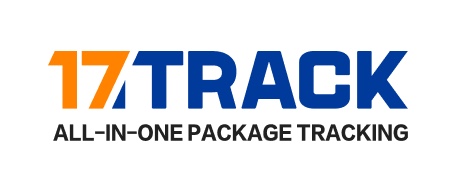The standardized return process for freight transportation between China and Australia involves five core steps: pre-qualification for returns, electronic application, standardized warehousing, quality inspection and label replacement, and multi-channel distribution. By integrating policy support and quality control, this process significantly simplifies the return process for cross-border e-commerce. Here is a detailed analysis of the process and its advantages:
I. Step-by-step Analysis of Standardized Return Process
Return Eligibility Pre-Review
Time Limit: The purchase time of the goods should not exceed the return cycle stipulated by the platform (usually no more than 30 days).
Packaging Requirements: Maintain the original packaging intact, without any usage, opening or modification marks; for special categories (such as electronic products, cosmetics), they must comply with the platform's special return and exchange policies.
Value Verification: Automatically verify the value of the goods through the overseas warehouse management system or platform interface to ensure it matches the return policy.
Electronic Return Application
Application Channel: Submit a standardized return application form through the overseas warehouse management system, including the reason for return, evidence materials (photos/videos) of defects, order number, SKU code, and list of return quantities.
Information Integration: The system automatically links the order information to reduce manual entry errors and improve application efficiency.
Standardized Return Goods Storage Operation
Packaging Specifications: Use industrial-grade shockproof materials for secondary reinforcement, and prominently mark "Returned Goods + Order Number" on the outer box to facilitate quick identification by the warehouse.
Logistics Selection: Select DHL, TNT or local dedicated services based on the nature of the goods, and recommend adding transportation insurance to reduce transportation risks.
Document Requirements: The commercial invoice must clearly state "Returned Goods" and accompany the goods to ensure smooth customs clearance.
Warehouse End Receiving and Quality Inspection
Double Recheck Mechanism:
Initial Inspection: Verify quantity and check for transportation damage.
Recheck: Verify the functional integrity of the goods (electronic products need to undergo power-on testing).
Video Recording: Archive the entire process for future reference to ensure a transparent and traceable quality inspection.
Label Management: Sellers provide PDF format new label files, and the warehouse conducts version verification through the label management system to avoid label errors.
Label Replacement and Packaging
Old Labels Removal: Use an automated label stripping device to remove old labels, reducing human error.
New Labels Printing: Use industrial-grade thermal printers to print new labels to ensure clear and durable labels.
Customized Packaging: Select packaging solutions based on the product attributes (such as shockproof, moisture-proof), and simultaneously attach the shipping labels specified by the seller to the outer box.
Multi-channel Logistics Distribution
FBA Warehouse Direct Delivery: Support Amazon FBA warehouse reservation for入库, shortening the warehousing cycle.
Third-party Platform Distribution: Connect with eBay, Shopify, etc. warehouses to achieve multi-channel sales.
Overseas Warehouse Temporary Storage: Provide 30-day free storage service, allowing sellers to flexibly allocate inventory based on sales situations.
II. Key Points of Service Quality Control
Service Provider Selection Criteria
Qualification Certification: Hold AEO advanced certification qualifications to ensure compliant operation.
System Integration: Equipped with WMS system and API integration capabilities with mainstream e-commerce platforms to achieve real-time data synchronization.
Insurance Services: Provide full-process insurance services, covering transportation, storage, and quality inspection.
Compliance Consultation: Provide interpretation of Chinese and Australian customs policies to help sellers avoid return risks.
Operation Compliance Execution
Timeliness Commitment: Strictly implement the 48-hour inventory quality inspection response mechanism to ensure the rapid processing of returned goods.
Dual Recheck: Implement a dual-person recheck system for label replacement to reduce operational error rates.
Exception Handling: Establish a special handling file for damaged, misshipped, etc. abnormal goods for separate management.
Cost Optimization Suggestions
Transportation Mode Selection: Use sea freight consolidation schemes for batch returns to reduce transportation costs; choose air freight direct delivery services for high-value goods to shorten the cycle.
Out-of-stock Product Handling: Establish a decision-making model for out-of-stock product return storage and destruction to avoid inventory accumulation.
Policy Utilization: Make full use of cross-regional return pilot policies to reduce return transportation distance and costs.
III. Policy Support and Compliance Assurance
Cross-regional Return Pilot
The Chinese customs has launched cross-regional return pilot programs in 20 direct customs offices in Beijing, Tianjin, etc., allowing returned goods to be returned to nearby customs areas instead of the original export customs. This policy reduces transportation distance and costs, while simplifying the customs clearance process.
Tax incentives
Qualified returned goods (such as unsold items or those returned due to reasons) can be returned to the country in their original condition within 6 months of export, and are exempt from import duties and other taxes, thereby reducing the cost of returns.
Deletion of registration requirements
The registration of cross-border e-commerce export to overseas warehouses is cancelled. Enterprises can directly declare for export, saving 2-3 days of approval time and improving operational efficiency.
IV. Enhancement of service value
Efficiency improvement
Through standardized processes, the inventory turnover rate has increased by more than 40%, and the success rate of secondary listing exceeds 98%.
Logistics cost optimization is 15-20%, significantly reducing the operating costs of cross-border e-commerce.
Experience improvement
Consumers can enjoy faster return processing speeds, enhancing the shopping experience.
Sellers can reduce inventory accumulation and capital occupation caused by returns, and improve capital utilization efficiency.
Compliance guarantee
Standardized processes ensure that return operations comply with the regulatory requirements of Chinese and Australian customs, avoiding fines or goods seizure due to violations.
Provide full-process insurance services to reduce risks during the return process.


